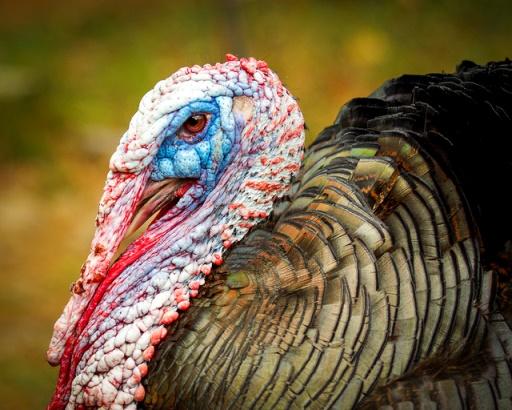The H5N8 avian influenza virus sweeping across Europe has now been detected for the first time in Britain, hitting a turkey farm in Lincolnshire, with Serbia now reporting that the virus has spread beyond wild birds to backyard poultry.
Also today, French veterinary officials announced an outbreak from yet another strain—low-pathogenic H5N9—as it, Poland, and the Netherlands reported more H5N8 detections.
Virus wiped out nearly 5,000 British turkeys
The UK Department for Environment, Food, and Rural Affairs (DEFRA) said in a statement today that the outbreak near the town of Louth, located in the eastern part of the country, killed most of the 5,000 birds at the facility and that the others will be culled.
Dr Nigel Gibbens, DEFRA's chief veterinary officer, said immediate steps have been taken to keep the virus from spreading, and he urged bird keepers to maintain good biosecurity and quickly report any signs of disease. "We are urgently looking for any evidence of disease spread associated with this farm to control and eliminate it."
A spokesperson for Public Health England said there have been no reported human H5N8 cases. "Despite the risk being very low, we will offer health advice to those people who may have been exposed on the farm as a precaution."
DEFRA said a detailed investigation is under way to pin down the likely source of the outbreak. The avian flu outbreak is the United Kingdom's first since January, in which a highly pathogenic Eurasian strain struck a broiler farm in Scotland.
H5N8 in backyard birds in Serbia
Following Serbia's first detection of H5N8 in wild waterfowl earlier this month, the virus has now jumped to backyard poultry, the country's agriculture ministry said in separate reports yesterday and today to the World Organization for Animal Health (OIE). All three outbreaks occurred near Novi Sad, in the same area in the north central region where mute swans with the virus were found.
The outbreaks in backyard birds started on Dec 10, sickening 5 of 237 susceptible birds. The remaining ones were culled to control the spread of the virus.
France reports low-path H5N9, more H5N8
Testing done as part of surveillance in an avian flu restriction zone in foie gras ducks from Gers department headed for the slaughterhouse turned up low-pathogenic H5N9 for the first time, France's agriculture ministry said today in a report to the OIE. The birds were from two different farms.
In 2015, highly pathogenic H5N9 was one of the strains in a gush of outbreaks that struck farms in southwestern France.
In the new low-path outbreaks, the 1,870 birds on the two farms will be destroyed as a precaution.
Meanwhile, H5N8 outbreaks were detected at eight more duck farms in Gers, Landes, and Pyrenees-Atlantiques departments, according to separate report to the OIE yesterday and today.
One outbreak reported today was detected during sampling as part of the investigation into other outbreaks in the vicinity, and the other was found when farm workers noticed bird deaths. Authorities culled 650 birds on the second farm.
In yesterday's OIE report, officials detailed four outbreaks in Gers department and one each in Landes and Pyrenees-Atlantiques. All the outbreaks involved duck farms and were detected after authorities took samples as part of the area's outbreak investigations. All told, 33,164 birds were destroyed after 172 cases and 286 deaths were discovered.
More H5N8 at Polish farms, in Dutch wild birds
In Poland, the H5N8 virus hit another farm in Lubuskie province, killing 329 of 1,000 susceptible birds, according to a report to the OIE. Authorities destroyed the remaining birds. The farm is in far western Poland.
Elsewhere, the Netherlands reported 12 more H5N8 detections in wild birds from different locations, most of them in the northern part of country along the North Sea area.
The 41 dead birds were collected from Dec 2 through Dec 12. Species included mainly waterfowl, but also a crow and a peregrine falcon, according to a report today to the OIE.
H5N6 developments in Korea, Japan
A day after South Korea raised its avian flu alert to its highest level, the government issued a statement on steps to address possible human infections, according to a statement today translated and posted by Avian Flu Diary (AFD), an infectious disease news blog. Authorities said they have expanded epidemiology surveillance teams and noted that 6,779 people—mainly farmers and cullers—have been classified as high risk for the disease. Public health officials are monitoring them and have made antiviral medication available.
Japanese agriculture officials, meanwhile, have detected highly pathogenic avian flu on another farm, this time in Hokkaido prefecture, according to a government statement translated and posted by AFD today. If the virus is confirmed as H5N6, it would be the fifth such outbreak on a farm in Japan, which hasn't been hit as hard by the virus as its neighbor South Korea.
See also:
Dec 16 DEFRA statement
Dec 15 OIE report on Serbia outbreak
Dec 16 OIE report on Serbia outbreaks
Dec 16 OIE report on H5N9 in France
Dec 16 OIE report on 2 French H5N8 outbreaks
Dec 15 OIE report on 6 French H5N8 outbreaks
Dec 16 OIE report on Polish outbreak
Dec 16 OIE report on H5N8 in Dutch wild birds





















